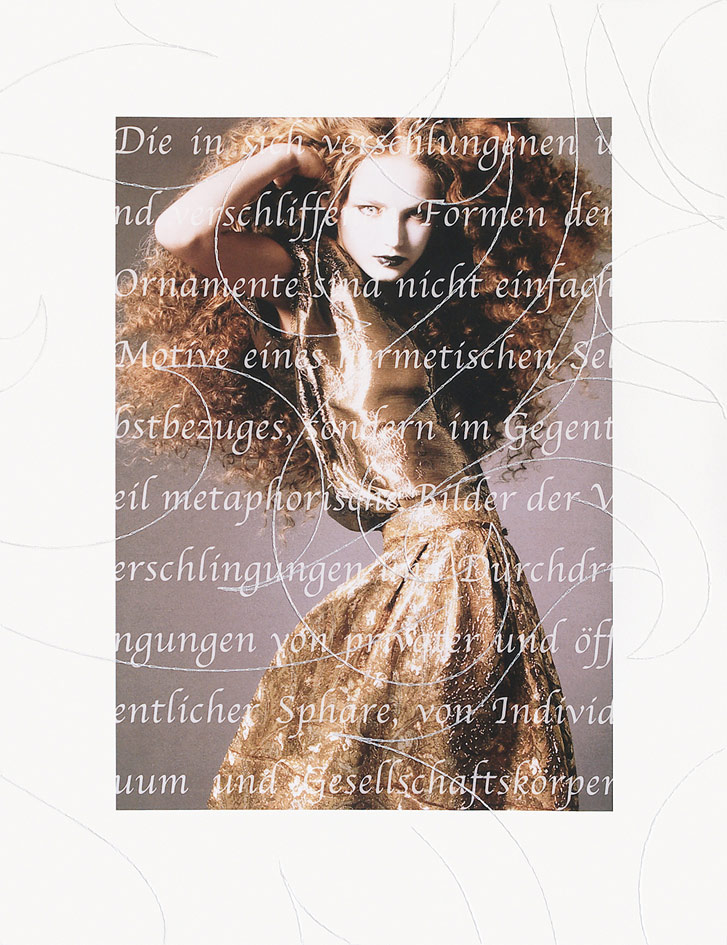
“Schnörksel”, 2005/2006
Pigment prints on handmade paper (reproductions
of fashion magazines, digitally processed, redesigned
with texts by Rainer Fuchs, Mumok Vienna),
embroidered, framed, 56 × 43 cm each
(Photos: Michael Michlmayr)
The intertwined and slurred forms of the ornaments are not simply motifs of a hermetic self-reference, but on the contrary metaphorical images of the intertwining and interpenetration of the private and public sphere, the individual and the body of society.
X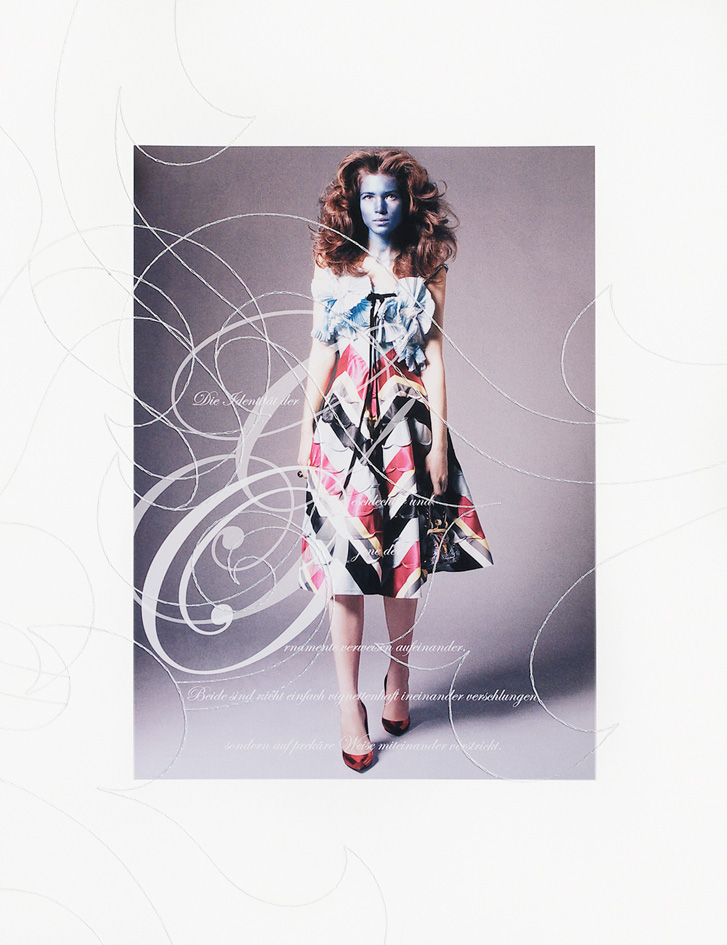
The identity of genders and that of ornaments refer to each other. Both are not simply intertwined like vignettes, but rather precariously entangled with each other.
X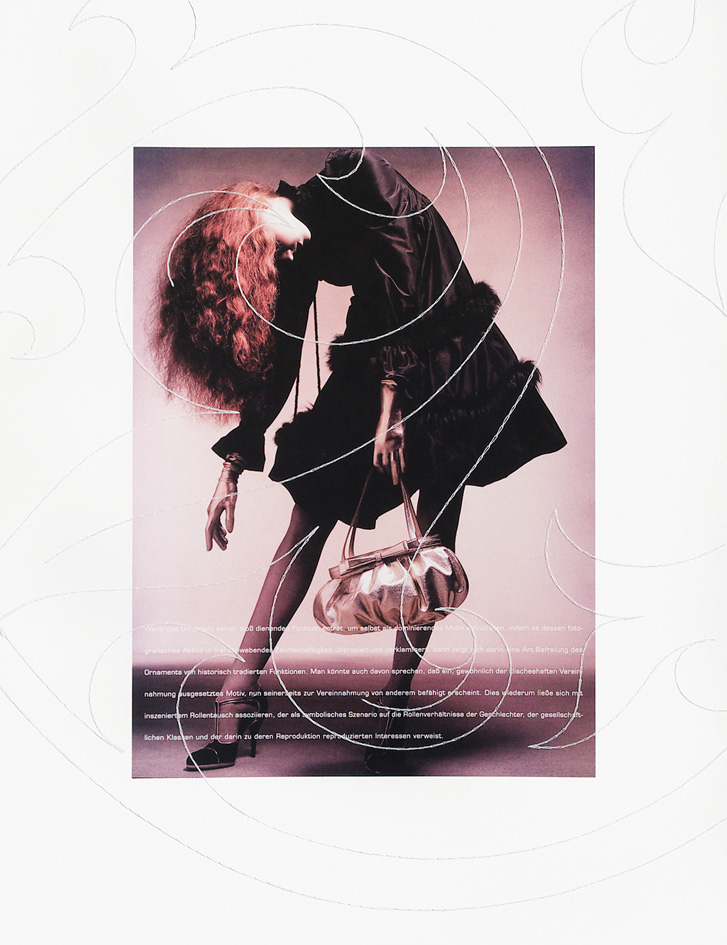
When ornament dispenses with its purely subservient function to appear as a dominant motif by transferring and entrenching its photographic depiction in free floating symbolism, what we see is a kind of liberation of the ornament from traditional historical functions. One might also speak of a motif usually subject to stereotyped monopolisation now appearing able to monopolise others. This, in turn, might be associated with a staged reversal of roles, a symbolic scenario drawing attention to the roles of genders, social classes, and the interests reproduced in them for the purpose of their reproduction.
X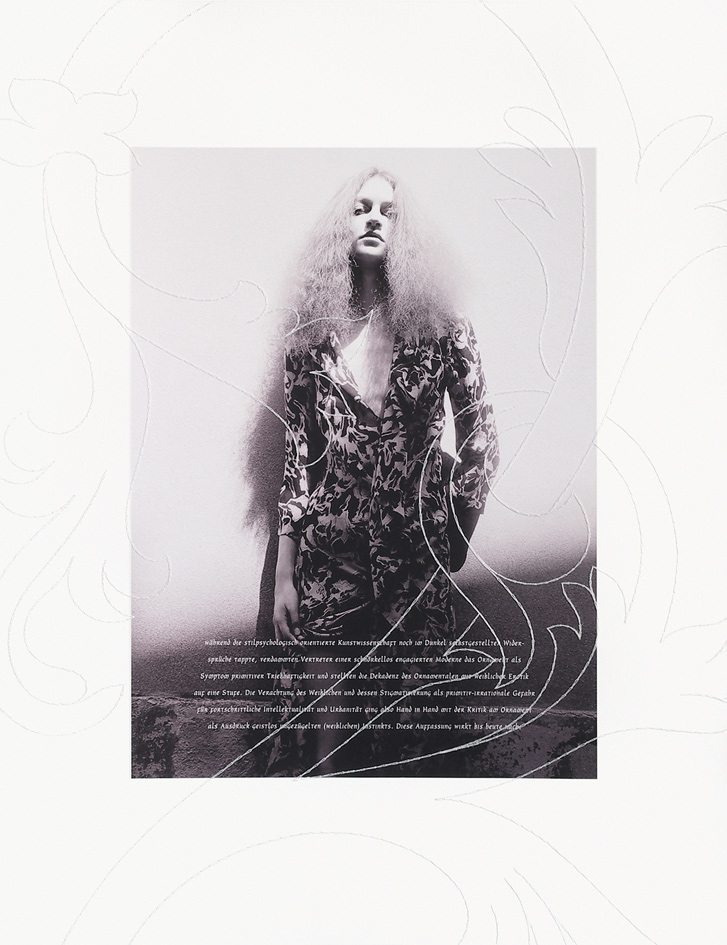
Whereas the science of art, founded on the psychology of style, was still groping around in the dark of self-imposed contradictions, advocates of an unadorned, committed modernism condemned the ornament as a symptom of primitive impulse, equating the decadence of ornamentation with female eroticism. The contempt for the female and its stigmatisation as a primitive, irrational danger to progressive intellectualism and urbanity thus went hand in hand with the criticism of the ornament as an expression of a trivially unbridled (female) instinct. This view persists to this day.
X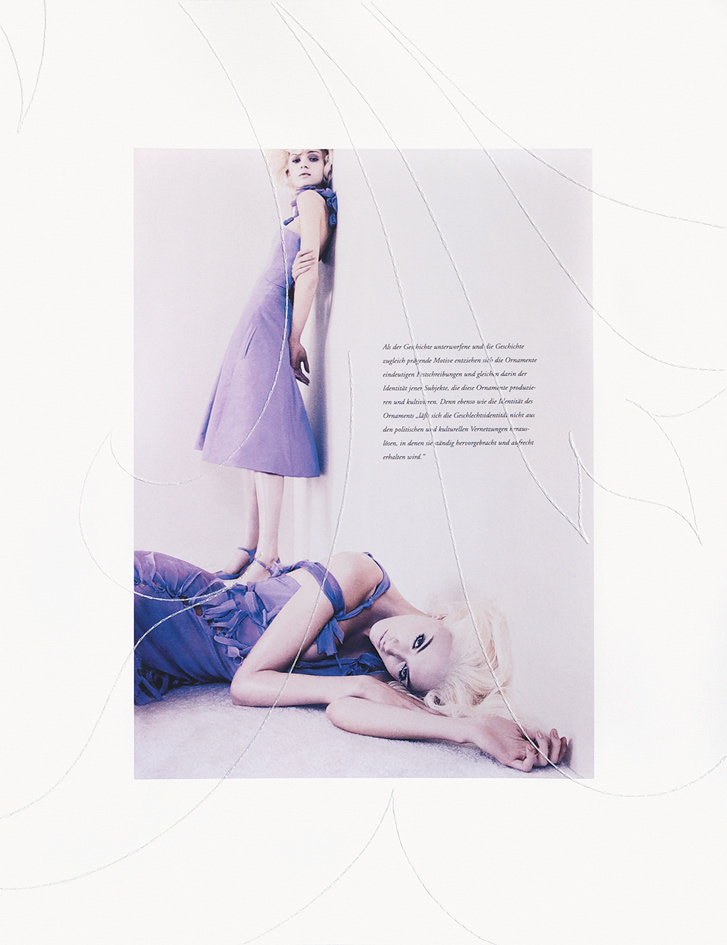
As motifs that are both governed by history and that define history, ornaments elude any clear-cut allocations and, in this regard, are akin to the identity of those subjects who produce and cultivate these ornaments. For just like the identity of the ornament, “gender identity cannot be detached from the political and cultural networks in which it is constantly produced and maintained.”
X